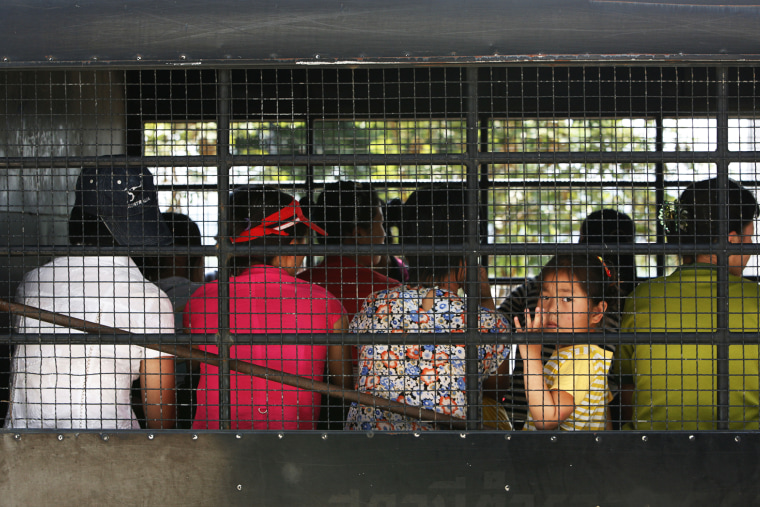BANGKOK -- The American public became aware of tens of thousands of Central American children at the US-Mexico border after photos of kids jammed into overcrowded detention centers went viral. With fits and starts, the US has made some headway in moving most of these children into foster care and other appropriate accommodations while the courts sort out whether they should be allowed to stay or be sent home.
But tens of thousands of other children throughout the world languish for years in jail-like detention centers as processing of their asylum claims stagnates. Authorities often play a waiting game in the hopes that the detainees will give up and pay for their own plane tickets home.
One such child, 10-year-old Bhavani spent a fifth of her life in Bangkok’s Immigration Detention Center. The girl’s family had fled Sri Lanka and sought refuge in Thailand. But Thailand’s immigration laws do not grant asylum seekers legal status or adequate protection, and the government instead held the family in an immigration lock-up for two years.
During a decade of research on the practice of the immigration detention of children like Bhavani globally, we have documented a multitude of human rights violations and conditions that fall far short of international standards.
Bhavani, who was ultimately recognized as a refugee by the United Nations refugee agency, is the youngest of six children, all of whom were living in Bangkok with their parents. Early one morning, while her mother and brother were not home, immigration police raided their apartment and took her father and the remaining children to Suan Phlu detention center. At Suan Phlu the police separated the girls from their father and held them in separate cells. When Bhavani’s mother learned of the arrest, she voluntarily turned herself in to immigration authorities so she could at least try to provide some protection for her girls.
Each year, Thailand detains thousands of children in dismal immigration facilities and police lock-ups across the country. Children are held in cells with adults who are strangers, denied access to adequate medical services and education, and abused and mistreated by police, guards, and other detainees.
The conditions in these detention centers and police lock-ups are often degrading and inhumane. Bhavani’s 12-year-old sister described people “sleeping all on top of each other, so crowded even right up to the toilet … at some point we couldn’t sit.” Unsanitary conditions give way to physical ailments. Crammed in their tiny, smoke-filled cell, her mother told us, Bhavani developed a rash all over her body.
The practice of immigration detention is a growing phenomenon. While countries have the right to control their borders, the default to detention leaves children vulnerable.
Children held in detention, particularly for long periods with no release in sight, suffer lasting consequences, physically and mentally. Detention can create new traumas or exacerbate previous ones.
In February 2013, the United Nations Committee on the Rights of the Child called on all countries to “completely cease the detention of children on the basis of their immigration status.” And when children are detained, the conditions must meet international standards.
The Convention on the Rights of the Child—the international treaty that protects the fundamental rights of children, guided by the “best interests of the child” principle—states that all children have a right to family unity. In Bhavani’s case, the family could only meet when a charity group visited the detention center and asked to meet with the whole family—at best only once, maybe twice, a month. For the girl’s family, this was the only semblance of unity that they could preserve under the circumstances.
For all her suffering, Bhavani was very fortunate—her family was among the relatively few refugees worldwide accepted for resettlement. They are now in the United States. Her mother still worries about the 20 or so other children detained with them, saying that “their education, their health, their future is spoiled.”
The family’s story is not unique. Today there are over 50 million people who have been forced to flee their homes to go abroad, a record high since World War II. And over half the world’s refugees are children.
The bare, brutal existence found in many immigration detention centers around the world is not in the best interest of any child. Countries around the world should stop detaining children in immigration lock-ups, and should pursue alternatives, such as open family shelters and foster care for unaccompanied children. They should be working to create a feeling of normality for children whose lives have been uprooted, children like Bhavani.
Shaivalini Parmar is a senior Asia associate at Human Rights Watch.
